Products
SERS system
SERS system
Thermo Fisher Scientific's DXR/SERS Analysis Package is a kit for surface-enhanced Raman spectroscopy (SERS) that integrates Raman instrumentation, software, sampling accessories, SERS substrates, and instructions. The kit reportedly provides laser power control to help users avoid sample damage or detector saturation. According to the company, the kit's interchangeable lasers can be used for substrates that require different wavelengths. Thermo Fisher Scientific, Waltham, MA;
www.thermoscientific.com/raman
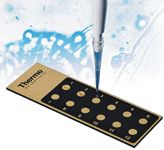
Dispersive Raman microscope
BaySpec's MovingLab dispersive Raman microscope is designed for analyzing liquid or solid samples at the point of sampling in the field. The portable instrument is supplied with an on-board swivel-notebook computer with a USB 2.0 output for an external PC or monitor. Optional 532-, 785-, and 1064-nm excitation wavelengths are available. BaySpec, Inc., San Jose, CA;
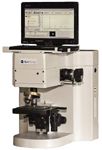
UV–vis spectrophotometer
The BioSpec-nano UV–vis spectrophotometer from Shimadzu Scientific Instruments is designed to be a dedicated spectrophotometer for the quantitation of nucleic acids or fluorescent-labeled nucleic acids, protein analysis, and photometric analysis. According to the company, the spectrophotometer requires a 1-µL sample for a 0.2-mm pathlength analysis or a 2-µL sample for a 0.7-mm pathlength analysis. Sample mounting, measurement, and cleaning reportedly are performed by the instrument. The company states that the sample measurement time is 3 s. Shimadzu Scientific Instruments Inc., Columbia, MD;

Inorganic materials database
The PDF-4 2010 database from the International Centre for Diffraction Data provides coverage of inorganic materials for phase identification using physical, chemical, and crystallographic data. The database reportedly contains 301,282 data sets, digitized patterns, molecular graphics, and atomic parameters. Other features include electron diffraction simulations based on atomic structure and electron diffraction scattering factors on more than 270,000 data sets. International Centre for Diffraction Data, Newtown Square, PA;

Mercury analyzers
Mercury analyzers from Teledyne Leeman Labs are atomic fluorescence–based analyzers designed for environmental analyses. The Hydra IIAF analyzer uses simple fluorescence and reportedly provides a detection limit of 0.1 ppt or less for laboratories performing EPA Method 245.7 or European Standard EN 3506. The Hydra IIAF Gold analyzer includes a switchable gold amalgamation system for preconcentration and can be used for EPA Method 1631 and European Standard 12338; it also includes a 270-position autosampler. Teledyne Leeman Labs, Hudson, NH;
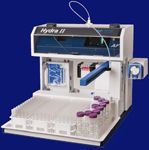
DPSS laser
The Cobolt Flamenco diode-pumped solid-state (DPSS) laser is designed for applications such as DNA sequencing and interferometry. The laser operates at 660 nm with up to 300 mW CW output power. According to the company, the laser provides a low noise level of less than 0.1% rms. Cobolt AB, Solna, Sweden;
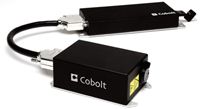
Microwave digestion system
The Discover SP-D pressurized microwave digestion system is designed to process a typical digest in 10 min, including cool down. The system reportedly provides pressure and temperature control for every sample and uses Pyrex or quartz vials with disposable snap-on caps. PTFE liners are also available. According to the company, typical sample sizes as large as 0.5 g are comparable to 100-mL vessels because of the system's ActiVent feature, which reportedly vents excess gaseous by-products without loss of analytes while allowing the digestion to continue uninterrupted. The system can be placed on a benchtop or in a fume hood. CEM Corporation, Matthews, North Carolina;

Monochromators
Mini-Chrom monochromators from Optometrics Corp. are designed for use as the principal optical assembly in various instruments and analyzers. When not integrated, the monochromators reportedly can be used in basic and applied research projects in industrial, government, and university laboratories. Optometrics Corp., Ayer, MA;
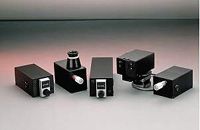
FT-IR spectrometer
The Nicolet iS5 FT-IR spectrometer from Thermo Fisher Scientific is designed for product assurance testing, basic troubleshooting, and chemistry teaching. According to the company, the small-footprint instrument provides performance comparable to full-size spectrometers. The instrument incorporates the company's OMNIC software with features for raw materials, impurities, and mixtures identification. Thermo Fisher Scientific, Waltham, MA;
www.thermoscientific.com/raman
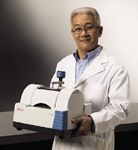
Spectrophotometer sample cell
Hellma's TrayCell spectrophotometer sample cell is designed to be used in spectrophotometers with standard cell holders to convert them into systems for drop analysis. Samples reportedly are pipetted onto the cell's measuring window and the light path is adjusted with the cap. According to the company, the common light paths of 1 and 0.2 mm achieve factors of 10 and 50 compared to previous procedures in 10-mm cells. Hellma GmbH & Co. KG, Müllheim, Germany;

Miniature visible-wavelength spectrometer
The Torus visible spectrometer (360–825 nm) from Ocean Optics is an aberration-corrected concave diffraction grating spectrometer designed to provide low stray light, high throughput, and thermal stability for applications such as absorbance measurements of optically dense solutions and fluorescence measurements in solutions and powders. The spectrometer includes a USB port and can be coupled to a computer and the company's accessories. The spectrometer is available with various slits, filters, and other optical bench accessories and operates using the company's SpectraSuite spectroscopy software. Ocean Optics, Dunedin, FL;
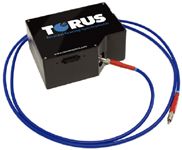
Certified reference materials catalog
SPEX CertiPrep's 2011–2012 catalog of certified reference materials includes more than 4000 organic and inorganic reference materials and standards. The catalog lists reference materials for inorganic analysis by ICP, ICP-MS, IC, AA, XRF, and ion-selective electrode and organic analysis by GC, GC–MS, HPLC, and LC–MS. The catalog also includes consumer safety products designed for the analysis of phthalates in polyethylene, heavy metals in plastic, and RoHS/WEEE compliance samples. More than 100 PCB congeners are also listed. SPEX CertiPrep, Metuchen, NJ;
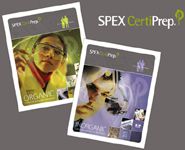
ICP-MS systems
The model 820-MS and 810-MS ICP-MS systems from Bruker are designed for automated, low-maintenance, interference-free operation and analysis. The systems reportedly include web-integrated, worksheet-style software. Bruker Daltonics, Billerica, MA;
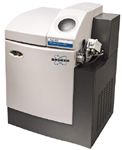
Laser diode module
The LBX-785S LaserBoxx laser diode module from Oxxius reportedly is available in a single frequency at 785 nm at an output power of up to 100 mW in circular diffraction limited beam. According to the company, the laser's stabilization technique ensures less than 10-MHz linewidth and long-term wavelength stability. The laser module includes USB and RS-232 interfaces and comes with a controller. Oxxius, Lannion, France;
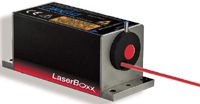
Portable Raman analyzer
The EZRaman-I-9 portable Raman analyzer from Enwave Optronics is designed to minimize fluorescence for the analysis of difficult-to-measure samples. According to the company, the analyzer provides longer excitation wavelength above 900 nm. Enwave Optronics, Inc., Irvine, CA;
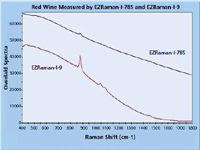
UV–vis–NIR microscope spectrophotometer
The model 308 PV UV–vis–NIR spectrophotometer is designed to be added to an open photoport of a microscope or probe station for nondestructive spectral analysis of samples such as minerals, flat-panel displays, and semiconductor thin films. The spectrophotometer reportedly can acquire spectra of microscopic sample areas by absorbance, reflectance, luminescence, and fluorescence. According to the company, it can also be used with properly configured microscopes to obtain high-resolution color images. CRAIC Technologies, San Dimas, CA;
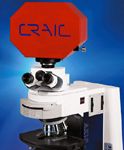
GC–FT-IR interface
The IX10-8B GC–FT-IR interface from AABSPEC is designed with a solid gold light-pipe. The interface reportedly is capable of being used with capillary chromatography flow rates and provides a high level of inertness. According to the company, the interface enables analyses at higher upper temperature operating limits. AABSPEC, Plainview, NY;
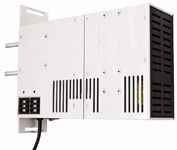
Raman mineral spectra
Fiveash Data Management's Raman mineral spectra are intended for use in identifying both common and rare minerals and gems. According to the company, the spectra can be used by industrial users working with common materials and for museum curators and others who have traditionally depended on visual identification. White light–corrected spectra reportedly were run with lasers emitting at 514, 532, 780, and 785 nm. Fiveash Data Management, Inc., Madison, WI;
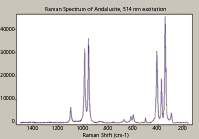
Capillary inlet tubes
Fieldmaster resistive glass capillary inlet tubes from PHOTONIS USA are designed to control the speed and direction of ions. Voltages applied across the tubes reportedly preferentially attract either positive or negative ions and draw them into a mass spectrometer. The tubes are available as single channels and as a six-channel array contained within a single inlet tube. According to the company, the single capillary array resistive glass increases transfer efficiency 6–10X compared with quartz inlet tubes. PHOTONIS USA, Sturbridge, MA;
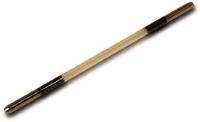
Handheld FT-IR analyzer
The Exoscan handheld FT-IR analyzer from A2 Technologies includes the Spherical ATR sampling interface for analyzing materials such as powders, granules, and polymer, composite, and plastic sheets. Two versions of the interface are available, including a diamond ATR interface for solid samples and a germanium ATR interface for the analysis of carbon-black-filled rubber or surfaces with thin layers. According to the company, the interfaces can be used for quality assurance and quality control of products that are too large to be brought to a laboratory.A2 Technologies, Danbury, CT;
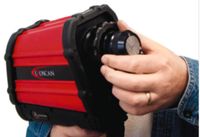
Bandpass filters
TECHSPEC High Transmission OD6 bandpass filters from Edmund Optics are designed to be matched to common fluorophores used in fluorescence imaging applications. The filters reportedly feature greater than 93% transmission and greater than OD6 blocking outside of the passband and can be used as components in spectroscopy and clinical chemistry applications and biotech instrumentation. According to the company, each filter is hard sputter coated on a single fused-silica substrate and mounted in a black anodized ring. Edmund Optics, Inc., Barrington, NJ;

FT-NIR software
Horizon MB software from ABB Analytical Measurement includes features for developing and deploying FT-NIR quality assurance methods. The software includes smart wizards for each feature. The software reportedly provides functions for chemometric models, library searching, QA method deployment, and regulated environments. ABB Analytical Measurement, Quebec, Canada;

Spectroscopy product catalog
A catalog from PIKE Technologies includes attenuated total reflectance, diffuse reflectance, and specular reflectance products; integrating spheres; polarization products; an IR microscope; beam condensers; remote sensing products; and transmission sampling accessories. Many of the products reportedly are available with optional heating and automation. PIKE Technologies, Madison, WI;

High-speed camera
The SU1024LDH2 high-speed, digital line scan shortwave InGaAs camera from Sensors Unlimited - Goodrich ISR Systems is designed for imaging applications such as absorption or emission spectroscopy in combustion research or agricultural–food product inspection. The 1024-pixel camera reportedly features a line rate of greater than 91,900 lines per second. According to the company, the camera housing includes metric and SAE mounting holes on multiple sides for mounting to spectrometers. The camera reportedly has a wavelength response range of 0.8–1.7 µm with a 25-µm pixel pitch and aperture heights of 25 µm or 500 µm. Sensors Unlimited - Goodrich ISR Systems, Princeton, NJ;
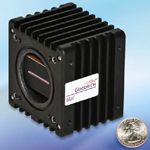
X-ray source
Moxtek's 40-kV Magnum Reflection X-ray source is designed to be a high output, low-power-consumption device for use in high-resolution contrast imaging, quantitative XRF, and qualitative XRD. The source reportedly can deliver a flux of 2 × 1011 photons/s/steradian/0.10 µA into a large solid angle of 45° at the full width half maximum. According to the company, the source has a maximum high voltage potential of 40 kV, a beam current of 0.10 mA, and total power of 4 W. The source reportedly operates on an input voltage of 7–10 V DC with a maximum power consumption of 7 W. Moxtek Inc., Orem, UT;
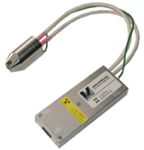
Portable MS system
The Miniature Chemical Detector from 1st Detect is an ion-trap mass spectrometer designed for field-portable and handheld applications such as industrial process control, security and defense, first response and critical infrastructure monitoring, and medical diagnostics and analysis. The instrument has a weight of 15 lb, a mass range of 10–450 amu, and a resolution of less than 1 amu. It reportedly provides analysis times of less than 2 s. The instrument can be operated with power supplies including 120/240 V AC, 24 V DC, or supplied batteries. 1st Detect, Austin, TX;
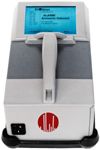
FT-NIR analyzer
The MPA multipurpose FT-NIR analyzer from Bruker Optics is designed for the analysis of liquids, solids, powders, and tablets. The analyzer's transmission head reportedly can be combined with an autosampling unit and optional tablet holders. According to the company, the analyzer can be connected via Ethernet to a laptop computer and can be placed on a utility cart. Permanent online diagnostics reportedly monitor the instrument continuously and advise users of any problems.Bruker Optics, Inc., Billerica, MA;

Confocal Raman imaging system
WITec's True Surface Microscopy imaging mode is designed to allow large-area topographic coordinates from the profilometer measurement to be precisely correlated with the large-area confocal Raman imaging data. This option reportedly enables samples that would normally require extensive preparation to obtain a certain surface flatness to be automatically characterized as they are. According to the company, it allows scan ranges as large as 50 mm × 100 mm with a spatial resolution of 100 nm vertically and 10 µm laterally. WITec GmbH, Ulm, Germany. www.witec.de
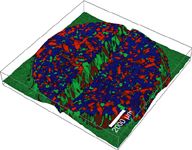
NIR spectrometers
The DWARF-Star RED-Wave NIR spectrometers from StellarNet are equipped with an InGaAs detector array for the 900–1700 nm wavelength range. The spectrometers reportedly achieve 1.5-nm resolutions. According to the company, the spectrometers feature no moving parts and a small size for hardware integration. Each system comes with the company's SpectraWiz software and source codes, customizable demo programs, and full spectroscopy applications in LabVIEW, Visual Basic, Delphi Pascal, and MS Visual C. StellarNet, Inc., Tampa, FL;
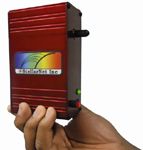
Gas generators
Parker Balston FT-IR Purge Gas generators from Parker Hannifin are designed for use with FT-IR spectrometers to provide a purified purge gas and air bearing gas using standard compressed air. According to the company, they remove impurities such as water vapor and carbon dioxide to a -100 °F pressure dew point and less than 1 ppm, respectively. The wall-mountable generators reportedly are available with flow capacities of 3.1–102 L/min. Parker Balston, Haverhill, MA;

Absorptive polarizers
Absorptive wire-grid polarizers for the blue, green, and red channels are designed for narrow-band applications and uses in which back reflection is a concern. The polarizers reportedly transmit the p-polarization and absorb the s-polarization of the incident light rather than reflecting the unwanted light away from the polarizer. According to the company, the absorptive polarizers eliminate the need to control rejected polarization, which is an advantage for LCD projection systems. Moxtek Inc., Orem, UT;
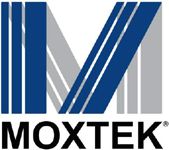
FT-IR spectrometer
The ALPHA compact FT-IR spectrometer from Bruker Optics has a footprint of 22 cm × 30 cm and a weight of 7 kg. The spectrometer reportedly is insensitive to vibration and can be moved and used without alignment. Accessories include a universal sampling module, ATR sampling modules, a DRIFT module for solid samples, and an external reflection module for large samples such as coated metal, paper, or textiles. Bruker Optics, Inc., Billerica, MA;

Spectrometers
The AvaSpec Sensline ULS2048x16-USB2 and ULS2048x64-USB2 spectrometers from Avantes are designed for applications requiring high sensitivity such as fluorescence spectroscopy and low-light-level detection. According to the company, the spectrometers, feature an ultralow-stray-light optical bench and back-thinned CCD detectors with high quantum efficiency for measurements in the UV to NIR range of 200–1160 nm. Avantes, Inc., Broomfield, CO.
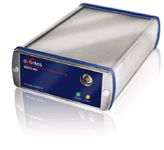
ICP-MS system
The NexION 300 ICP-MS system from PerkinElmer is designed for parts-per-trillion detection of trace elements. According to the company, the system reduces the need for daily user maintenance and cleaning. The instrument reportedly provides three modes of interference removal: standard, collision, and reaction. The modes are designed for routine analyses, semiquantitative analyses, and analyses of difficult elements and matrices, respectively. PerkinElmer, Inc., Waltham, MA.
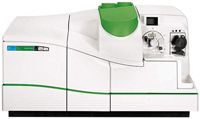
Raman microscope
The XploRA INV compact analytical Raman chemical imaging microscope from HORIBA Scientific reportedly combines the automatization features and small footprint of a standard confocal Raman microscope with the capabilities of an inverted microscope for biological applications such as cell research, cancer detection, pharmaceutical verification of intercellular activities, inclusion of microreactors, and incorporation of AFM units for tip-enhanced Raman spectroscopy. According to the company, the microscope's open structure permits the use of options and add-ons for inverted microscopes, such as micromanipulators, "optical tweezers," and specific enclosures for cell applications. HORIBA Scientific, Edison, NJ;

Silicon drift detector
The Super SDD silicon drift detector from Amptek is designed for high-count rate applications in hand-held systems and bench-top analyzers. The X-ray detector, preamplifier, and cooler system reportedly are thermoelectrically cooled. The input FET and a feedback circuit are mounted on the detector's two-stage cooler and are kept at approximately -55 °C. According to the company, the 25 mm2 × 500 µm detector provides an FWHM resolution of 127 eV, a peaking time of 11.2 µs, and a peak-to-background ratio of 8000. Amptek, Inc., Bedford, MA;
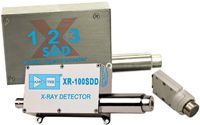
Photovoltaic measurement system
Newport Corporation's Oriel IQE-200 photovoltaic cell measurement system is designed for simultaneous measurement of the external and internal quantum efficiency of solar cells, detectors, and other photon-to-charge converting devices. The system reportedly splits the beam to allow for concurrent measurements. The system includes a light source, a monochromator, and related electronics and software. According to the company, the system can be used for the measurement of silicon-based cells, amorphous and mono/poly crystalline, thin-film cells, copper indium gallium diselenide, and cadmium telluride. Newport Corporation, Irvine, CA;
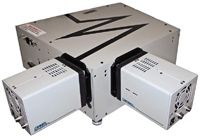
Raman microscope
Renishaw's inVia Raman microscope can be used for nondestructive testing of sperm DNA for assessing the healthiness of sperm cells. The instrument can be customized to integrate optical tweezing, which enables researchers to immobilize sperm cells with a tightly focused laser beam. The resulting Raman spectra contain information about the vibrations of molecules within the sperm cells and can be used to assess the state of its DNA. Renishaw, Hoffman Estates, IL;

Optical filters
Optical filters designed with sputtered coatings are available from CVI Melles Griot. The narrowband, broadband, and edge filters for fluorescence, microscopy, flow cytometry, and image processing reportedly provide 5-6 OD blocking and maintain a transmission of greater than 98%. According to the company, standard and custom designs are available. CVI Melles Griot, Carlsbad, CA;
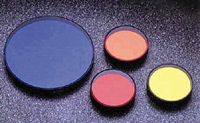
XRF inorganic elemental analyzer
EDAX's Orbis micro-XRF inorganic elemental analyzer is designed to perform nondestructive measurements that require minimal sample preparation and provide improved sensitivity over SEM and EDS methods. The analyzer includes a motorized turret for coaxial sample view and X-ray analysis. Primary beam filters can be used with X-ray optics for micrometer to millimeter spot elemental analyses. Applications include forensics, materials analysis, failure analysis, and elemental imaging. EDAX, Inc., Mahwah, NJ;

Cameras
The Synapse-I cameras from HORIBA Scientific are designed for low light level sensitivity and quantitative measurements in a single measurement. The cameras reportedly combine low-noise electronics, large pixels, high QE, and deep cooling to -70 °C. Applications include chemiluminescence, in-vivo imaging, and semiconductor failure analysis. The cameras are available with both front- and back-illuminated CCDs in 512 × 512 and 1024 × 1024 formats and come with either V++ imaging software or VspecPro software for dual imaging and spectroscopy use. Interchangeable mounts allow coupling to either a lens or a range of the company's spectrometers. HORIBA Scientific, Edison, NJ;

Knife mill
Retsch's GM 300 knife mill is designed for the sample preparation of foodstuffs. The mill has a 4.5-L capacity and a 1.1-kW motor. According to the company, the mill can be used with samples having high water, oil, or fat content, including frozen french fries, pizza, and gummy candies. The mill's grinding chamber and knife can be removed without tools, and all components that come in contact with the sample can be removed and autoclaved. The mill's speed can be adjusted for preliminary or fine size reduction throughout the 500–5000 min-1 range. A digital display can store as many as 10 parameter combinations. Retsch, Inc., Newtown, PA;
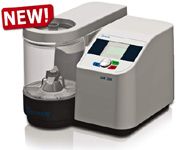
DNA quality control standard
Starna's DNA quality control standard is provided in a 1.5 mL liquid vial that offers the DNACON 260/280 reference material in format suitable for use in drop technology systems. The vial reportedly is produced in an ISO 17025 and ISO Guide 34 accredited environment and provides a NIST-traceable quality control standard. According to the company, the concentration is matched for use with ultralow volume and short-pathlength measurement systems. Applications include DNA purity evaluations in clinical and bioscience laboratories. Starna Cells Inc., Atascadero, CA;
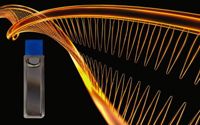
Mercury analyzer
The model RA-3000 Gold+AFS mercury analyzer from Nippon Instruments is designed for EPA Method 1631E. According to the company, the analyzer simplifies low- to sub-parts-per-million mercury analysis and reduces reagent consumption and wastes. Nippon Instruments North America, College Station, TX;
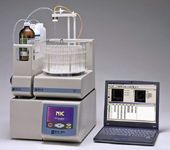
UV–vis spectrophotometer
The model 8453 UV–vis spectrophotometer from Agilent Technologies uses a photodiode-array detector to make measurements throughout the 190–1100 nm wavelength range. According to the company, measurements are made in less than 1 s. The system reportedly is coupled with the company's UV-Visible ChemStation software for data analysis, data archival, and compliance with pharmacopoeia requirements and good laboratory practices. Agilent Technologies, Inc., Santa Clara, CA;

Fiber-optic accessories
The Omni-Diff and Omni-Spec diffuse and specular reflection fiber-optic accessories from Harrick Scientific connect via 1.5-m cables to the company's FiberMate 2 interface installed in a spectrometer. According to the company, selection of the appropriate fiber cables allows operation in wavelength regions ranging from UV to the mid-infrared. An optional USB-compatible camera is available. Harrick Scientific Products, Pleasantville, NY;

Miniature spectrometer
The Glacier X thermoelectric-cooled miniature fiber-coupled spectrometer from B&W Tek is designed for applications that require portability. The system reportedly is available with wavelength configurations ranging from as low as 200 nm to as high as 1050 nm with resolutions between 0.6 nm and 4.0 nm. According to the company, the spectrometer comes equipped with a 2048-element linear CCD array, a built-in 16-bit digitizer, and a USB 2.0 interface. B&W Tek, Inc., Newark, DE.
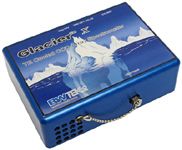
GC×GC–TOF-MS system
The Pegasus 4D GC×GC–TOF-MS system from LECO is designed to provide four dimensions of analytical resolution for complex samples. The system includes ChromaTOF 4.20 software with peak labeling for contour and surface GC×GC plots, graphing capabilities, and Fisher ratios that can be exported into peripheral software for additional analyses. The software also includes a Statistical Compare feature and LECO/Fiehn metabolomics library for analyte classification. LECO Corporation, St. Joseph, MI;
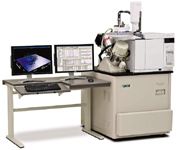
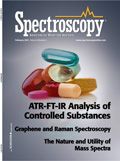
LIBS Illuminates the Hidden Health Risks of Indoor Welding and Soldering
April 23rd 2025A new dual-spectroscopy approach reveals real-time pollution threats in indoor workspaces. Chinese researchers have pioneered the use of laser-induced breakdown spectroscopy (LIBS) and aerosol mass spectrometry to uncover and monitor harmful heavy metal and dust emissions from soldering and welding in real-time. These complementary tools offer a fast, accurate means to evaluate air quality threats in industrial and indoor environments—where people spend most of their time.
NIR Spectroscopy Explored as Sustainable Approach to Detecting Bovine Mastitis
April 23rd 2025A new study published in Applied Food Research demonstrates that near-infrared spectroscopy (NIRS) can effectively detect subclinical bovine mastitis in milk, offering a fast, non-invasive method to guide targeted antibiotic treatment and support sustainable dairy practices.